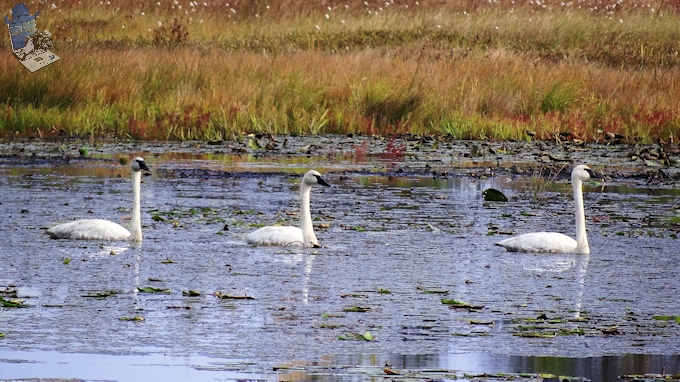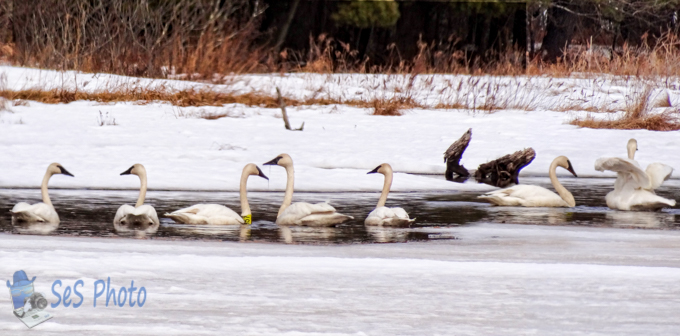Maybe Punxsutawney Phil was right about an early spring, even if my groundhog predicted a long winter, since flocks of geese have been seen as well as the return of some swans by a friend of mine.
My pond isn’t big enough for the Trumpeter Swans to land in or raise a family, but there are spots in the state where they do. The Trumpeter Swan was hunted for its feathers throughout the 1600s – 1800s, causing a tremendous decline in its numbers. Its largest flight feathers made what were considered to be the best quality quill pens.
Trumpeter Swans form pair bonds when they are three or four years old. The pair stays together throughout the year, moving together in migratory populations. Trumpeters are assumed to mate for life, but some individuals do ‘divorce’ and switch mates over their lifetimes. Occasionally, if his mates dies, a male Trumpeter Swan may not pair again for the rest of his life.
I’m still think it will be a long winter because there are hundreds of finches attacking my bird feeders right now and that makes it seem like they are stocking up for another snow storm!
Trumpeter Swans









